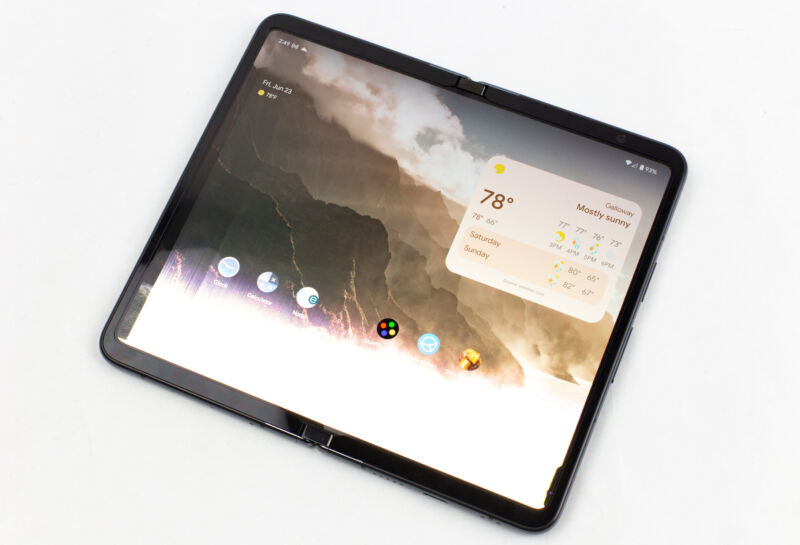
Enlarge / My dead Pixel Fold display. That huge white gradient should not be there.
Ron Amadeo
A flame that burns twice as bright burns half as long. That was my brief experience with the Pixel Fold, which was a wonderful little device until the display died, along with my hopes and dreams. I barely used it, but it was beautiful.
I didn’t do anything to deserve this. The phone sat on my desk while I wrote about it, and I would occasionally stop to poke the screen, take a screenshot, or open and close it. It was never dropped or exposed to a significant amount of grit, nor had it gone through the years of normal wear and tear that phones are expected to survive. This was the lightest possible usage of a phone, and it still broke.
The flexible OLED screen died after four days. The bottom 10 pixels of the Pixel Fold went dead first, forming a white line of 100 percent brightness pixels that blazed across the bottom of the screen. The entire left half of the foldable display stopped responding to touch, too, and an hour later, a white gradient started growing upward across the display.
Samsung, BOE, and pretty much every other company making foldable screens build these flexible OLEDs the same way. The OLED panel is covered in an “ultra thin glass” that’s thin and flexible enough to survive the folding process, though it’s not very durable. Because the glass can’t stand up to the slightest bit of damage, the whole display is covered in a protective plastic layer. This essentially kills the firm, slippery glass surface we’re all used to, but the interior glass layer provides some much-needed structure to what would otherwise be very squishy plastic.
This plastic layer is critical to the OLED’s survival, but it doesn’t stretch to the edges. Every company that builds these screens leaves a margin around the perimeter of the display where there is no plastic layer, just a raw, exposed OLED panel peeking out into the world. We would normally expect a foldable to break along the crease, where the screen sees the most stress. But mine died due to this exposed OLED gap.
The tiniest bit of something got in there, and when I closed the display, the pressure of the other display side was enough to puncture the OLED panel. It didn’t see or feel anything when closing the device, but the display pixels started freaking out. After going over the device with a magnifying glass, I think I found where the puncture was.
